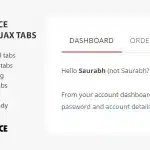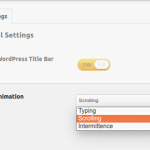The act of nulling a WordPress plugin is something that many developers and site owners are aware of, yet few grasp its full implications. This process entails altering the plugin’s code to eliminate authentication or licensing barriers, thus lifting restrictions on its use. While this may seem attractive, it carries substantial risks, both legally and in terms of the security of your website.
This article aims to clarify what it means to null a plugin, the methods involved, and why it is typically considered a poor choice. From grasping the technical aspects to examining the hazards associated with using nulled plugins, this guide provides all the necessary information for making a well-informed choice.
What Is a Nulled Plugin in WordPress?
A nulled plugin refers to a modified edition of a premium plugin. These plugins have been adjusted to eliminate licensing requirements, thereby permitting unauthorized usage without acquiring the original license. Although this might appear to be a simple way to gain access to premium functionalities, the truth is far more complicated.
Nulled plugins frequently harbor concealed security risks. Hackers might embed harmful code within the plugin, jeopardizing your website and putting sensitive information at risk. Moreover, nulled plugins do not benefit from updates or support, which leaves your site open to compatibility dilemmas and cyber threats.
How to Null a Premium Plugin: The Process
Nulling a premium WordPress plugin is a challenging endeavor that necessitates a certain level of technical knowledge. Here are the fundamental steps you’ll need to follow:
- Understand the Code: To null a plugin, familiarity with how WordPress plugins operate is essential. This includes understanding PHP, the main programming language used in WordPress, as well as the structure of the plugin’s files.
- Modify the Code: Identify the files that handle authentication and licensing. Substitute critical parts of the code with placeholder variables or empty strings to bypass the checks. Exercise caution, as incorrect modifications can disrupt the plugin’s functionality.
- Reactivate the Plugin: Following the code modifications, reactivate the plugin on your WordPress site. Some plugins may necessitate re-entering an authorization key, which can often be circumvented during the nulling procedure.
- Test Thoroughly: Confirm that the plugin operates as intended. Nulled plugins may introduce bugs or conflicts, so comprehensive testing is vital.
Risks of Using Nulled Plugins
Even though nulling a plugin might appear to be a budget-friendly option, it’s crucial to comprehend the associated risks:
- Security Threats: Nulled plugins often serve as a common entry point for malware and harmful code. Hackers can exploit vulnerabilities to pilfer data, deface your site, or utilize it for malicious intentions.
- No Updates or Support: Nulled plugins lack official updates, leaving your site susceptible to compatibility challenges and security flaws.
- Legal Consequences: Utilizing nulled plugins frequently constitutes a breach of copyright laws, which could lead to legal action from the plugin creators.
- Performance Issues: Altered code can result in bugs, sluggish loading times, or conflicts with other plugins and themes.
How to Detect a Nulled Plugin
If you suspect that a plugin on your site may be nulled, there are several strategies to verify this:
- Check the Source: Always obtain plugins from credible sources like the WordPress repository or well-regarded developers. Free downloads of premium plugins from unverified sites are likely to be nulled.
- Inspect the Code: Look for indicators of tampering, such as unusual comments, encrypted code, or mentions of third-party scripts.
- Contact the Developer: If you’re uncertain, reach out to the plugin’s developer to confirm its legitimacy.
- Use Scanning Tools: Applications like Wordfence or Sucuri can assist in identifying harmful code and other security threats.
Alternatives to Nulled Plugins
Instead of jeopardizing your website’s security and functionality, explore these alternatives:
- Free Plugins: Numerous free plugins provide excellent features without necessitating a license.
- Freemium Models: Some premium plugins offer a free version with limited features, enabling you to test them before making a purchase.
- Discounts and Bundles: Search for discounts, bundles, or lifetime deals on premium plugins.
- Open-Source Solutions: Consider open-source alternatives that offer transparency and community support.
Why Licensed Plugins Are the Better Choice
Licensed plugins provide numerous benefits that validate their cost:
- Regular Updates: Stay synced with the latest WordPress versions and security enhancements.
- Dedicated Support: Gain access to professional assistance when problems arise.
- Peace of Mind: Steer clear of legal and ethical dilemmas by supporting the developers who create valuable tools.
Conclusion
Nulling a WordPress plugin may appear to be a quick way to access premium features, but it is fraught with risks and complications. From security vulnerabilities to legal ramifications, the potential downsides significantly overshadow any advantages. For a dependable and secure website, investing in licensed plugins is the wiser option.
By relying on legitimate sources and prioritizing website security, you can create a WordPress site that is both functional and secure. Always remember, the reassurance that comes with utilizing authentic plugins is well worth the investment.










